Reisebericht von Paul Veenvliet zum Naturformen-Eintrag S. tectorum from Mount Javornik
Years ago, we found a post on a Croatian forum in which someone claimed to have a Sempervivum marmoreum from the (Slovenian) mount Javornik. This message was rather intreguing, because S. marmoreum is not known from Slovenia. In stead, it's close relative S. tectorum is a native plant, but even this one wasn't known from Javornik. Also the habitat is unlikely, because houseleeks need sun and bare rocks and Javornik is almost entirely covered with dense -and beautiful- forest. My friend and Slovenian houseleek specialist Jure Slatner has been searching the area on several occasions and didn't find any houseleeks there. Neither did I ...
Until last year: I was there with a visiting British botanist. I told him the above story and he almost immediately pointed to the ground: there they are! And indeed, there were houseleeks. Sure, S. tectorum and not S. marmoreum. But not all S. tectorum in Slovenia are native plants: some are planted, which can be many decades ago. If the place is right, they can survive very long indeed. So were these native? My first thought was that they probably aren't, because we saw them on only a few square meter and not somewhat further in similar habitat. Today I changed my mind: I found several about 50 meter from the first ones!
Still, I have no way to tell how many there are. I have seen only few, but the rock is steep and to me largely inaccessible. But there it is: a hidden jewel of a plant, from a totally isolated rocky place in the middle of the deep dark forest of mount Javornik.
Some additional information:
Mount Javornik, or "Javorniki" in Slovenian is a mountain ridge of which the highest top reaches 1200 meter. The ridge is situated between the lowland of the intermittend Lake Cerknica in the North and the Pivka valley in the south. In the past, the densely forested mountain ridge was quite a formidable barrier and even nowadays local people speak different dialects on either side of it.
Much of the forest is dominated by beech (Fagus sylvatica), spruce (Picea abies) and fir (Abies alba), but on the southern slopes there are interesting stands of (native) lime (Tilia) and maple (Acer). the ridge is named fter these places because "javor" is Slovenian for maple. The forest is nowadays used for wood production but still in a good state with a rich undergrowth. Three years ago, many trees were damaged in an unprecedented ice-rain. Throughout the forest there are unpaved macadam roads, but there are signs at only some of the crossroads and navigation can be tricky (I sometimes end up somewhere else than where I intended to be :) ). Because the forest is quiet, there are still wolves, bears and lynx here.
Zum Antworten auf den Reisebericht muss man sich hier auf www.sempervivum-liste.de einloggen.
Bildergalerie - © alle Bilder sind urheberrechtlich geschützt!
- 29. April 2017Mount Javornik, with the intermittent Lake Cerknica in the foreground.


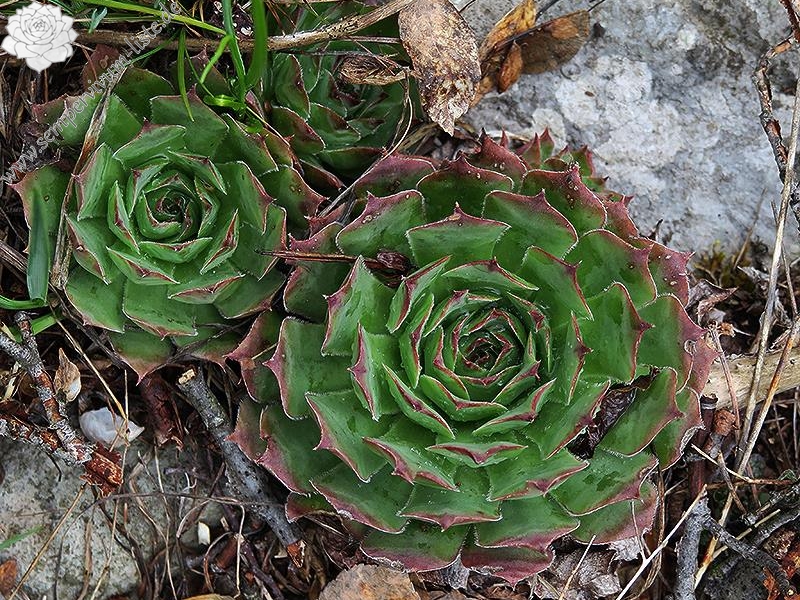
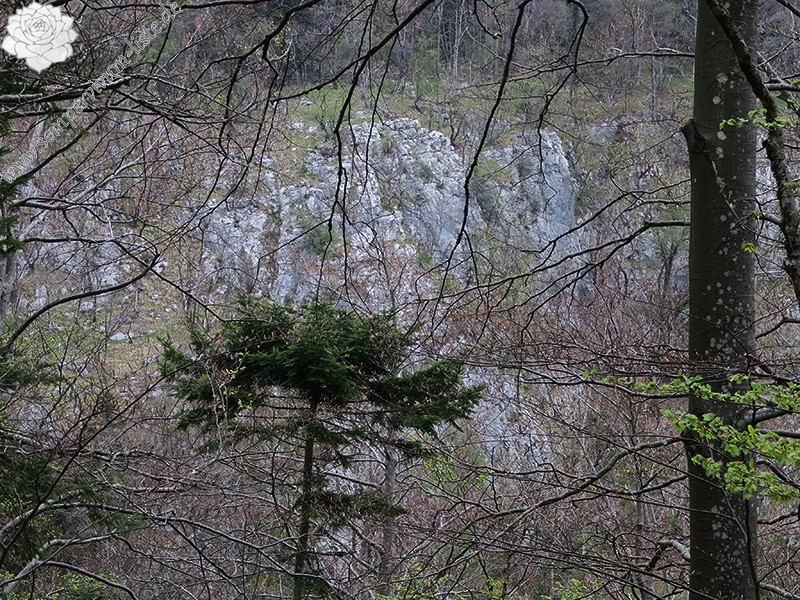
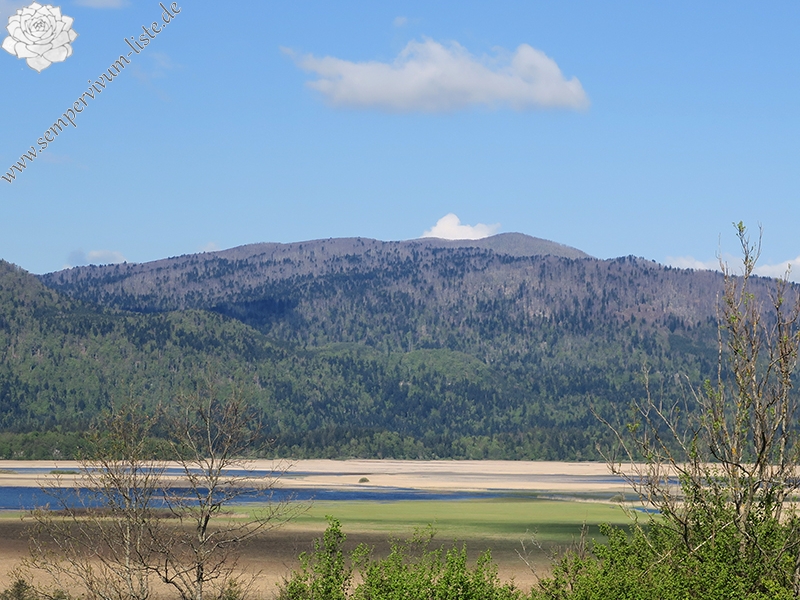
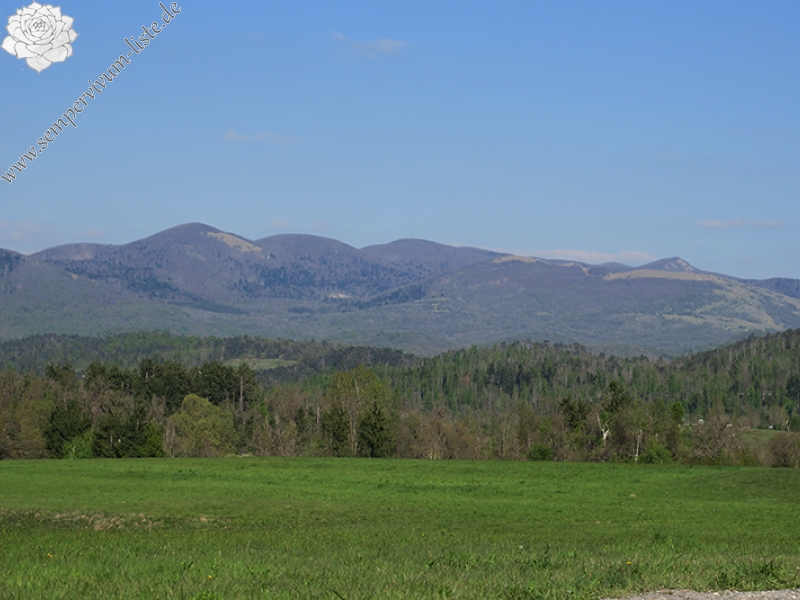
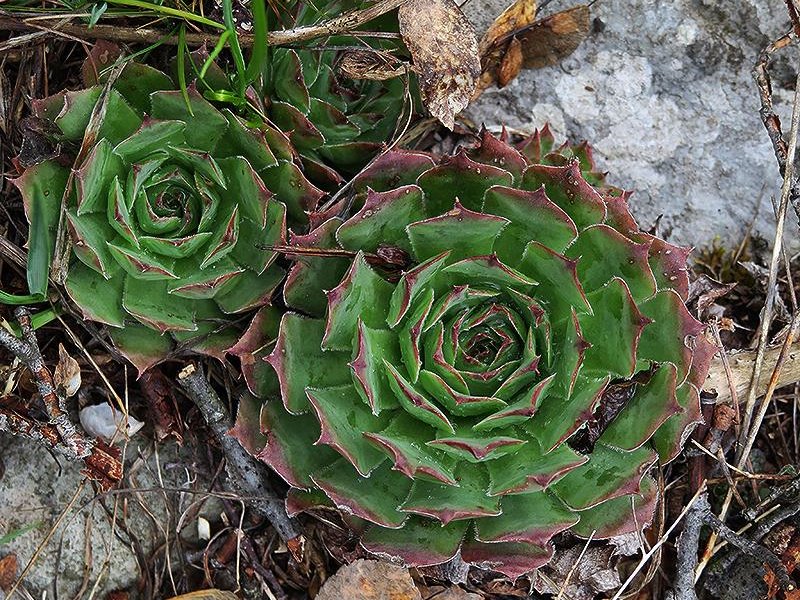
Comments
Antwort von Sempernicki am 28.04.2017
Hallo, lieber Illustrator,
vielen Dank, dass du deine Bilder und die Beschreibung zu den andern Reiseberichten gestellt hast. Einige Daten aus der Beschreibung und den Link hierher füge ich gleich noch in den Lexikon-Eintrag ein.
Hier die frei formulierte Übersetzung einiger Teile deines oberen und deines unteren Textes:
Zusammen mit einem britischen Botaniker für Hauswurze wurde der Frage nachgegangen, ob es in dem Gebiet S. marmoreum gibt, wie jemand meinte festgestellt zu haben. Man fand stattdessen S. tectorum, was aber vorher auch noch nicht bekannt war. Zunächst hielt man den Bestand im ungewöhnlichen Habitat mit dichtem Baumbestand für eine Ansalbung, also von Menschen hineingebracht. Aber als auch noch ein weiterer Bestand 50m weit weg gefunden wurde, war es wahrscheinlich: Die Pflanzen wachsen natürlich an diesem felsigen Teil im Wald.
Die Bergkette Javornik ist max. 1200m hoch. Es wachsen hier hauptsächlich Rotbuchen, Fichten, Weißtannen und an den südlichen Abhängen einheimische Linde und Ahorn. "Javor" heißt im Slowenischen Ahorn.
Der Wald wird heutzutage für die Holzproduktion genutzt, ist aber in gutem Zustand mit reichem Unterwuchs. Vor drei Jahren gab es einen Eisregen, bei dem viele Bäume beschädigt wurden.
Es ist schwierig sich im Wald zurecht zu finden.
Es gibt noch Wölfe, Bären und Luchse.
LG
Sempernicki
Antwort von illustrator am 29.04.2017
We live close by mount Javornik, so today I made this picture. In the foreground you see the shallow Lake Cerknica, which only has water after heavy rain and after the snow has been melting. Note that the lake is at 550 m asl, because of this the mountain looks lower than it really is. Maybe I'll make a picture from the other side tomorrow
Antwort von illustrator am 30.04.2017
Mount Javornik seen from the southside, picture from today. The open patches are largely man-made (grazed in the past). The peak on the right is not the highest one, but by far the nicest: there is a large population of the endemic Iris erirrhiza up there, but no houseleeks ...
Antwort von Sempernicki am 30.04.2017
Hallo illustrator,
du lebst in einer sehr schönen Gegend. Iris ist ja eigentlich noch schöner als Sempervivum.
Vielen Dank für die Bilder!
LG
Sempernicki
Antwort von illustrator am 30.04.2017
This iris is occasionally in culture in Slovenian gardens. I understand that these are plants which are given from one person to the next and most owners do not even know what they are growing. In this way, I also obtained it, so I have it in cultivation as well. My experience is that in my garden, it is a much easier plant than the "true Iris siberica", but this can be because I am at the correct climate/altitude/soil for this endemic Iris.
I have a second clone with the same name, but which is clearly different and which I got from the botanical garden. I don't know the true origin of this second Iris erirrhiza, but it is doing poorly and always has aphids, which the local one doesn't.